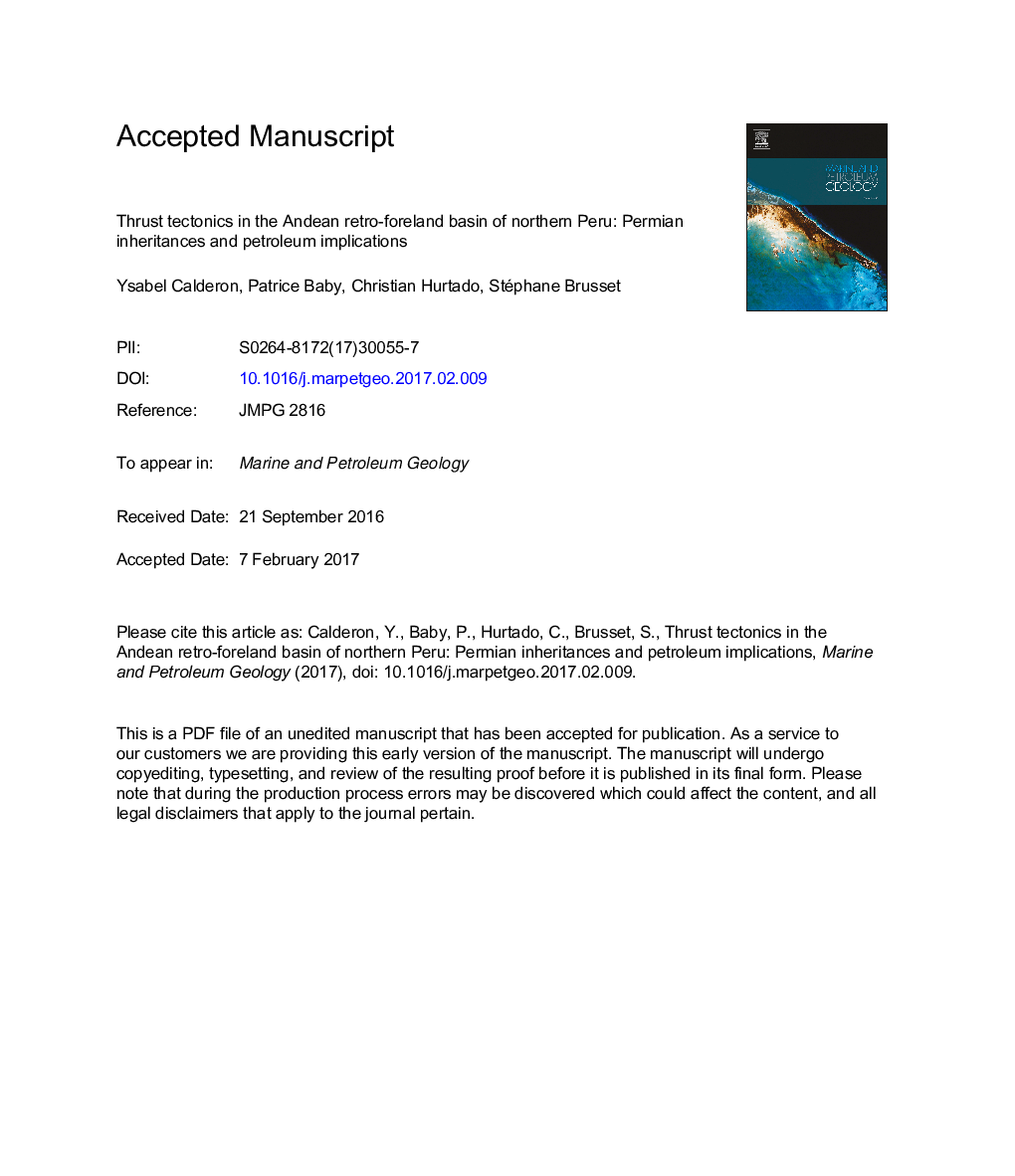| Article ID | Journal | Published Year | Pages | File Type |
|---|---|---|---|---|
| 5782107 | Marine and Petroleum Geology | 2017 | 42 Pages |
Abstract
In northern Peru, the Huallaga-Moyabamba-Marañon Subandean foreland basin system results from the interaction between thin and thick-skinned tectonics. Geophysical data and the construction of two balanced cross-sections show that this structural configuration has been controlled by Permian inheritances. A fossilized west-verging Middle Permian fold and thrust belt, which developed during the Gondwanide orogeny, has been partly reactivated by the Andean compression and controlled thick-skinned tectonics propagation. This west-verging thrust system is still active and causes the crustal and damaging seismicity of the Moyabamba region. Late Permian salt, which has sealed the Middle Permian fold and thrust belt, controlled thin-skinned tectonics propagation and the development of the must large overthrust of the Peruvian Subandean zone. The fossilized and partly reactivated Middle Permian fold and thrust belt constitutes a new petroleum play for the exploration in the northern Peruvian Subandean basins. Sub-thrust traps of the Moyabamba and Huallaga wedge-top basins are particularly attractive but stay unexplored.
Keywords
Related Topics
Physical Sciences and Engineering
Earth and Planetary Sciences
Economic Geology
Authors
Ysabel Calderon, Patrice Baby, Christian Hurtado, Stéphane Brusset,
